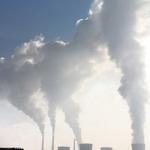
As of 1 January 2018, organisations that emit regulated hazardous substances into the ambient air, have to use the adopted methods for calculating the dispersion of air pollutant concentrations at the height of two meters from the ground level and at the distance not exceeding 100 km from the emission source as well as for vertical distribution of air pollutant concentrations.
The following methodologies have been adopted:
- Calculation of maximum one time concentrations from a point source;
- Calculation of air pollutant dispersion from an aeration lamp into the ambient air;
- Calculation of maximum single concentrations of pollutants in the ambient air caused by emissions from groups of point, line and area emission sources;
- Calculation of the dispersion of air pollutants in the ambient air, taking into account the impact of buildings and structures;
- Calculation of long-term average concentrations of pollutants in the ambient air;
- Impact of background concentration of pollutants on air pollution and calculation of the background pollution by using calculation methods; and
- Calculations of the dispersion of pollutant emissions in the ambient air from emission sources of various types.
The adopted dispersion calculation methods are to be applied from 1 January 2018. As of this date, the existing calculation methods adopted under No. 192 of 4 August 1986 (OND-86) are not to be applied any more.
All documentation that is approved before 1 January 2018 and developed pursuant to the existing methodology will remain valid throughout its normal validity period.
Law: Order No. 273 of 6 June 2017 on Approval of Methods for the Calculation of Dispersion of Hazardous (Polluting) Substances in the Ambient Air





